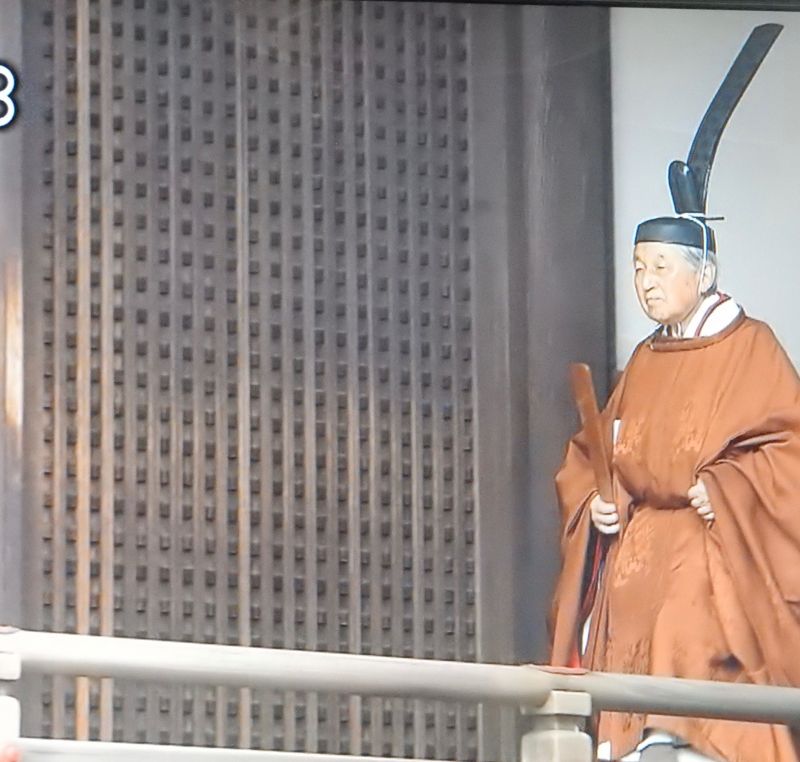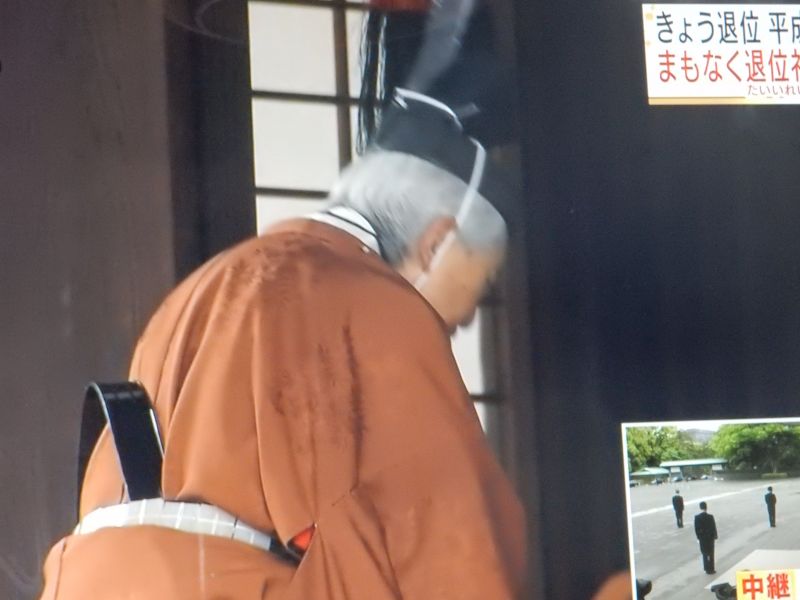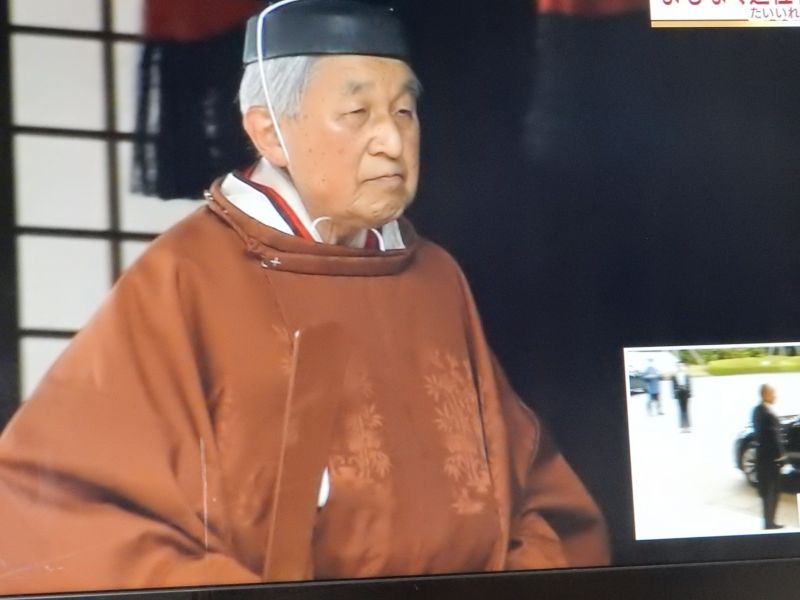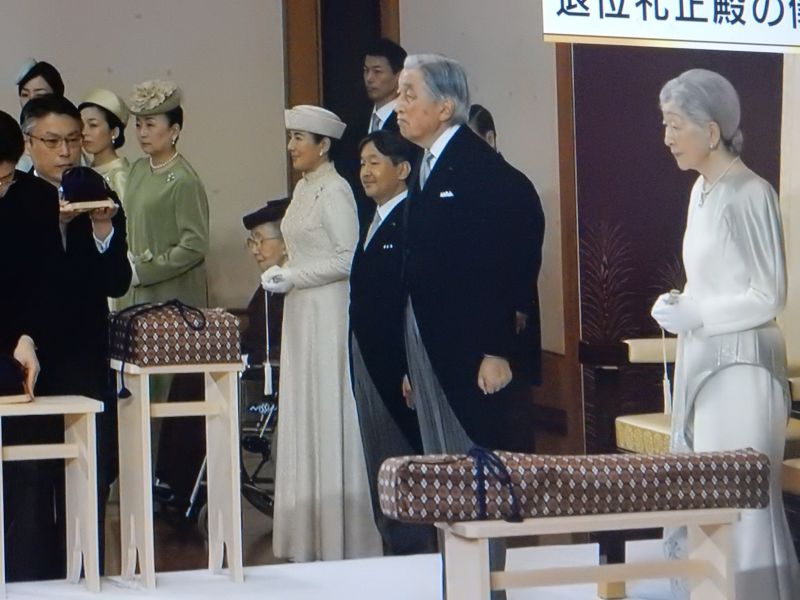Today Emperor Akihito officially abdicated, marking the last day of the Heisei era. In Shinto terms this meant that he reported his abdication to the Sun Goddess, Amaterasu ōmikami, as the purported great ancestor of his lineage. Reporting events to ancestors is a major element in the Japanese cult of the dead, known as ancestor worship. For the occasion the emperor dresses up in the ceremonial robes of high priest and enters the sanctuary which houses a circular mirror representing the Sun Goddess.
In Shinto mythology Amaterasu presented the original (housed at Ise Shrine) to Ninigi no mikoto when he descended to earth, telling him that it contained her spirit, as if her reflection was seared into the polished bronze surface. At some stage a copy of this was made and housed in the imperial palace. As reported in the previous post, this never leaves the sanctuary. However, the other two elements in the three Sacred Regalia play a very prominent part in the ceremonies, as can be seen in the photos below.

Emperor on his way to report his abdication to the Sun Goddess, ancestor of his lineage (he’s the 125th of his line, though the first ten at least are improbable)

Emperor pays respects before entering the sanctuary

The 85 year old Akihito, having reported his abdication now looking ahead to retirement

Divested of his priestly attire, the emperor attends a civic ceremony at which he receives appreciation from the prime minister representing the nation, before delivering his final words of gratitude to the nation. Notice the two patterned cases to left and right of him, one containing the sword and the other the magatama jewel – pagan symbols from two thousand years ago.
Extract from May 1 edition of The Japan Times
Tuesday’s ceremony to mark the abdication was televised live nationwide, taking place in the Imperial Palace’s most prestigious chamber, known as the Pine Chamber — the “only hall in the Imperial Palace that has a wooden floor,” according to the Imperial Household Agency.
The ceremony involved two of the three sacred emblems of Japan’s imperial family — a sword and a jewel — being placed on a table by chamberlains, who also brought state and privy seals into the room.
Throughout the 10-minute ritual, Emperor Akihito went nowhere near touching any of the regalia — let alone handing them down to his son — reportedly to avoid the impression that he was actively declaring his intention to abdicate, a taboo gesture that could be interpreted as running counter to the Constitution, which strips the Emperor of any political power.
The rite was attended by about 300 participants, including imperial family members and heads of the legislature, the government and the judiciary, as well as state ministers and representatives from local municipalities.

Leave a Reply